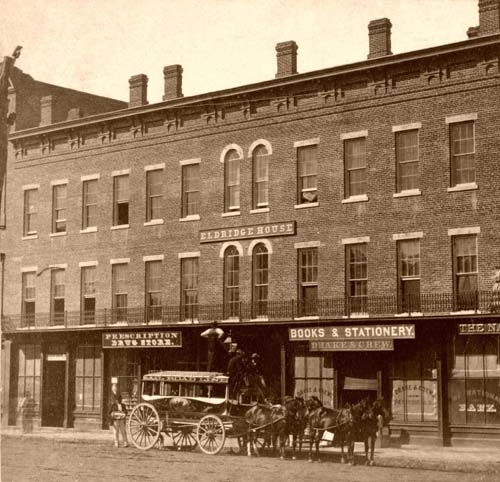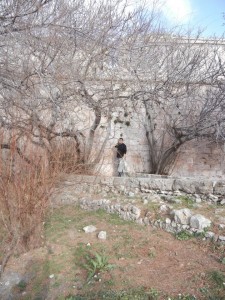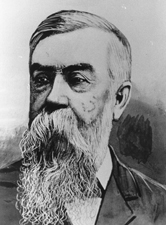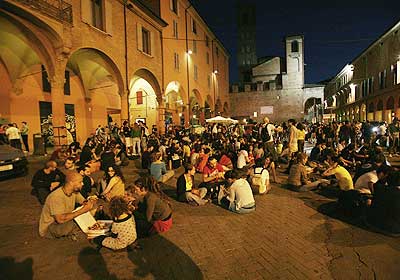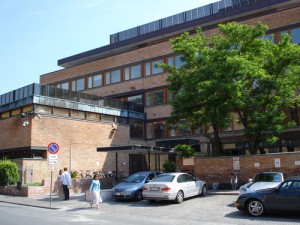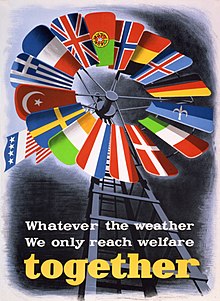Anyone familiar with Carlisle knows that every year the city hosts several large car shows. Whether it is the Corvettes that greet student’s return to school, or the sounds of big V8s on High St. waking up from sleep in springtime, celebration of automotive history and culture is alive and well. Carlisle’s own automotive history dates back to the very early days of motoring. Imagine owning a car built by a bicycle manufacturer, or one built in Rochester, New York, or even building one of your own design for your and your family to travel in. In the archives of the Cumberland County Historical Society lies a register of autos owned in Carlisle between May 1903 – August, 1905 which tells those stories, and more. 1903-1905 was a period of great growth in the auto industry, where there were an increasingly large number of cars being produced by many companies. Oldsmobile and Ford were both producing hundreds of cars per year. Many companies were successfully making steam-powered vehicles, while over a 30% of all cars sold in the US were electric cars. Chevrolet did not yet exist (1911), and neither did Chrysler. The Model T, and the formation of General Motors were a few years away (both in 1908) and cars were only very slowly becoming accepted into society. For more on the early history of the Automotive industry, see Beverly Rae Kimes, Pioneers, Engineers, And Scoundrels: The Dawn Of The Automobile In America. (Warrendale, PA: Society of Automotive Engineers, 2004). In 1905, the automobile was no longer just a curiosity, but it was also not yet the mammoth industry it would become in the coming decades.
This document was an early attempt to keep track of car ownership, before states handled registration. For this brief period, it was the town’s responsibility.
The breakdown in car ownership in Carlisle at this time is as follows:
4 vehicles made by Olds Manufacturing Company.
6 by Olds Mobile Company
4 by Cadillac
1 by the Lemoy Bicycle Company (many bicycle companies made cars too)
1 Packard
6 Ramblers, made by the eponymous, Kenosha, WI- based company owned by Tom Jeffery. Jeffery was a highly successful early car manufacturer.
1 by the Mfg. Mobile Co. of America Kingsland Point.
1 by the Walter Mfg. Co.
1 by Foster & Co. of Rochester, NY
1 H&H Franklin of Syracuse, NY
1 by the Pope Company (MD). Pope was a company owned originally by Albert Augustus Pope, or Col. Pope, of Hartford, CT. He, like so many others, entered autos through bicycles. His empire had facilities in multiple states.
2 by the Locomobile Co. from Connecticut
1 from Monarch Automobile (Ill.)
1 from The Mobile Co. of America (NJ)
1 Orient Buckband (Waltham, MA)
1 Elinor Mfg. (Clyde, OH)
1 Winton, a larger auto company from Cleveland, OH.

Also part of the list was George Proud. Proud built his own automobile, something not uncommon in this time.
Readers should take note of three characteristics of this source which make it particularly valuable for understanding the early automotive industry. The first characteristic is the diversity of companies trying their hands at building automobiles. The 1905 auto industry was a totally different landscape compared to that of 2012, or even 1950. There were dozens of miniscule companies like Elinor Mfg to go along with larger companies like Olds Mobile or Cadillac.

Monarch Automobile Company – one of the horde of small companies trying their hand at building cars
Even larger companies, such as Packard, would not survive long after the Great Depression and World War II. The second important takeaway is the diversity of locations these cars originated from; according to this source, Wisconsin, New Jersey, Massachusetts, and obviously the Detroit area were all areas of active car production. This makes sense when one considers the fact that a car could be built from scratch in ones garage. One Carlisle resident, George Proud did exactly that.
He is listed in the register as owning his own, home-built auto. This source is a record of innovation, and even though few of these companies survived long, (of them, only Cadillac still exists, with Oldsmobile being the most recent to die in 2004) many contributed to the advancement of automotive technology we take for granted today.

Cadillac’s have been roaming the streets of the Carlisle area for nearly 110 years
Thirdly, and most importantly, this is a record of a society attempting to come to grips with a new technology, one that threatened to change how they lived their lives. This was an early attempt to organize and track car ownership, and as such should be recognized as an important piece of Carlisle’s early history. This, and other similar documents offer us a picture of the chaotic early years of the auto industry, and further our understanding of the history of American consumerism as a whole.



